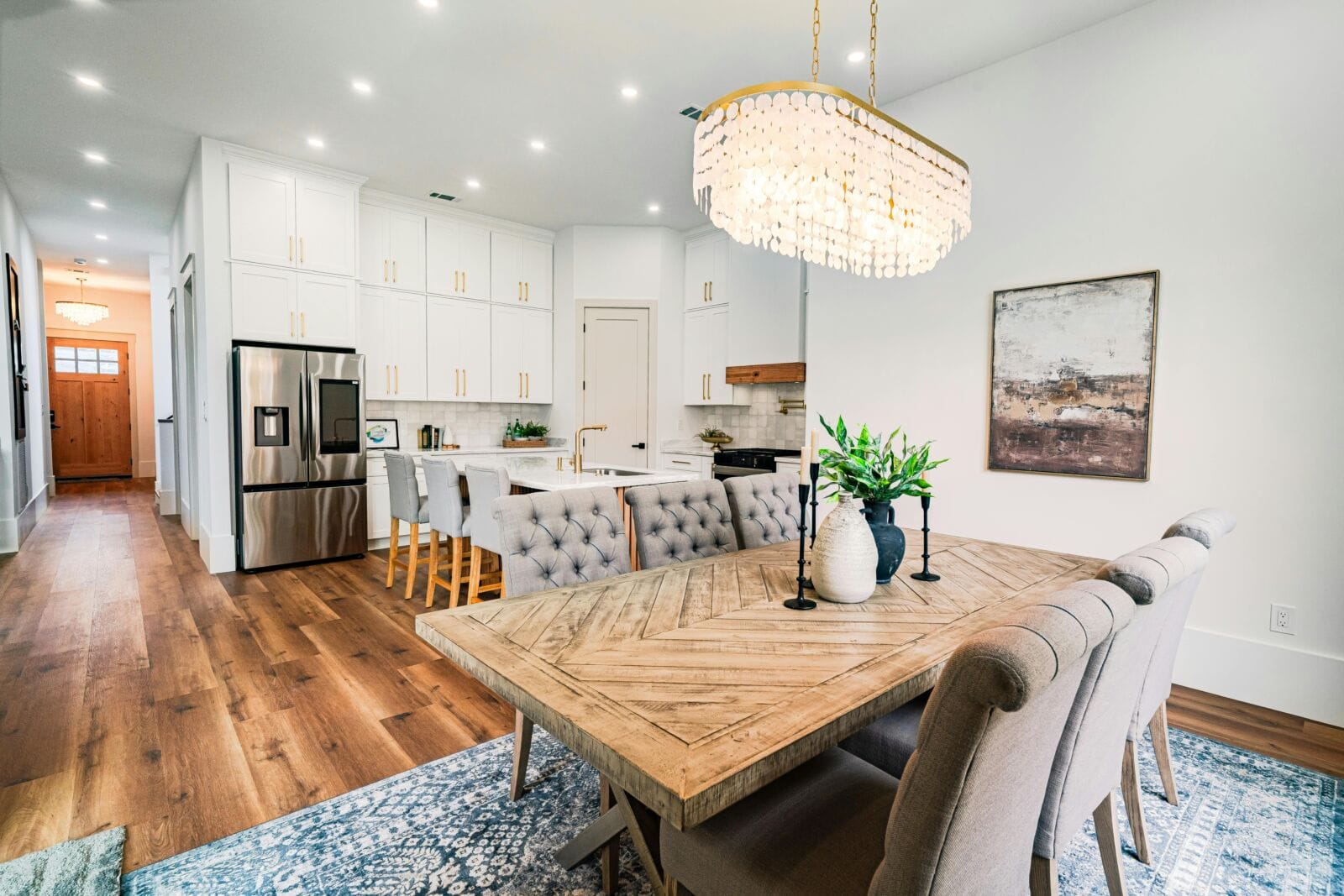Upgrading your home can be exciting, but not every trend deserves your attention—or your budget. Some design choices and innovations add lasting value, while others quickly fade, leaving homeowners with outdated looks and costly regrets. The key to smart home improvement is knowing which trends to embrace and which to avoid. Whether you’re looking for aesthetic upgrades, energy efficiency, or functional improvements, some trends are truly worth the investment. Others, however, are best left behind. Let’s explore which home improvement trends live up to the hype and which ones you should skip.
Smart Home Technology That Enhances Daily Life
Home automation has revolutionized how people interact with their living spaces. Voice-controlled lighting, smart thermostats, and security systems offer convenience, energy savings, and added protection. These features seamlessly integrate into daily life, making homes more efficient and functional. A well-placed smart doorbell can deter intruders, while automated blinds help regulate indoor temperatures.
However, some smart tech goes too far. Do you really need a Wi-Fi-enabled toaster? Overcomplicating simple tasks with excessive technology often leads to frustration rather than convenience. Stick with devices that truly enhance your lifestyle rather than adding unnecessary gadgets that require frequent troubleshooting.
Spa-Like Bathrooms for Everyday Relaxation
Creating a bathroom that feels like a luxury retreat is a trend that continues to gain traction. Homeowners are focusing on high-end finishes, rainfall showerheads, and freestanding soaking tubs to bring a spa experience into their daily routines. Heated floors and towel warmers add an extra touch of comfort, making mornings more enjoyable.
A bathroom remodel can significantly increase home value when done right. However, avoid overly trendy designs that may not age well. While statement tiles and bold colors can be fun, a timeless look ensures your space remains stylish for years. Stick with quality materials and classic aesthetics to get the most out of your investment.
Open-Concept Living Spaces: Still Worth It?
For years, open floor plans have dominated home design, offering seamless transitions between kitchens, dining rooms, and living areas. They create an airy, spacious feel and allow for better interaction between family members and guests. Large windows and fewer walls make spaces feel bigger and brighter.
However, not everyone loves the lack of privacy. Noise travels easily, and the absence of walls means fewer options for furniture placement. Some homeowners are shifting toward defined spaces, using partial walls, glass partitions, or sliding doors to create separation without losing openness. The key is finding the right balance between connectivity and functionality.
Sustainable and Energy-Efficient Upgrades
Energy-efficient homes are not just a trend; they’re becoming the standard. Solar panels, high-performance insulation, and smart thermostats help reduce utility bills while benefiting the environment. LED lighting and energy-efficient appliances also contribute to a more sustainable lifestyle without compromising convenience.
But not every “green” upgrade is worth the cost. Some high-end solar roof tiles, for instance, take decades to pay off, making them impractical for many homeowners. Instead, focus on energy-efficient solutions with a quicker return on investment, such as upgraded windows and improved HVAC systems, which provide immediate savings and comfort.
Bold and Dramatic Kitchen Designs
The all-white kitchen is no longer the go-to aesthetic. More homeowners are embracing bold colors, textured backsplashes, and mixed materials to add character and warmth. Dark cabinets paired with gold hardware, dramatic lighting fixtures, and statement-making stone countertops are redefining modern kitchen design.
However, some trendy choices can backfire. Overly personalized kitchens with bright-colored cabinets or unusual layouts may not appeal to future buyers. A balance between bold and timeless is key. If you want to experiment, consider bold accents like colorful bar stools or decorative lighting rather than permanent fixtures that might feel outdated in a few years.
Multifunctional Spaces for Maximum Use
Homes are no longer just places to eat and sleep—they serve multiple purposes. The rise of remote work has driven the demand for multifunctional spaces. A dining room might double as a home office, while a guest bedroom could incorporate a workout area. Built-in shelving, fold-away desks, and modular furniture help homeowners maximize their square footage.
While this approach is practical, forcing too many functions into one space can lead to clutter and inefficiency. A well-designed room should serve its primary purpose effectively without feeling cramped or chaotic. Thoughtful storage solutions and smart layout planning are essential for making multifunctional spaces work.
Outdoor Living Spaces That Extend the Home
Backyards are becoming true extensions of indoor living areas. Homeowners are investing in outdoor kitchens, fire pits, and cozy seating areas to create inviting spaces for relaxation and entertainment. Weather-resistant furniture, pergolas, and ambient lighting make these spaces feel just as comfortable as indoor rooms.
However, overly elaborate outdoor designs can be difficult to maintain. Features like built-in waterfalls or extravagant landscaping may look impressive but require significant upkeep. A low-maintenance outdoor setup with durable materials and smart design choices ensures long-term enjoyment without constant repairs or excessive effort.
Statement Ceilings That Elevate Interior Design
While accent walls were once the go-to design choice, statement ceilings are now taking center stage. Homeowners are experimenting with wood beams, intricate moldings, wallpaper, and bold paint colors to add visual interest above. Coffered and tray ceilings bring depth and elegance, making rooms feel more refined and luxurious.
But not every ceiling treatment works in every home. A highly detailed design in a small room can feel overwhelming, while dramatic colors may clash with existing decor. If you want to experiment, subtle additions like recessed lighting or a coffered pattern in neutral tones can add sophistication without overpowering the space.
Trends come and go, but smart home improvements focus on lasting value, functionality, and comfort. Investing in practical upgrades like energy efficiency, well-designed multifunctional spaces, and high-quality materials ensures a home stays both stylish and functional for years. While bold designs and innovative technology can enhance daily life, over-personalization and overly complex features often backfire. The key is to find a balance between modern upgrades and timeless appeal, ensuring that every change enhances both the home’s value and the homeowner’s lifestyle.




